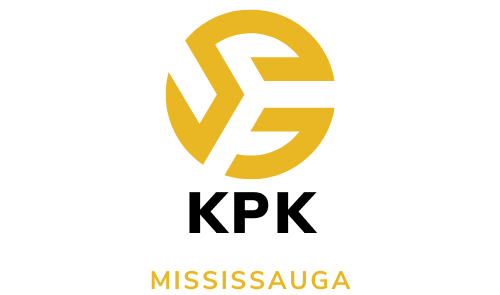Advancements in technology have significantly transformed the way we live. One of the key areas that have undergone unprecedented change is home automation. With smart devices, you can now control various aspects of your home – from lighting to security systems – all from the comfort of your couch or from a remote location. If you have been considering stepping into the world of home automation, this guide is for you. We will help you understand the basics of home automation and how to get started.
What is Home Automation?
Home automation refers to the automatic control of electronic devices in your home. These could be anything from lights to appliances, security systems, and even curtains. The control can be set up in a way that devices can be managed from a remote location, using a smartphone or any other device with internet connectivity.
A lire également : Seasonal energy saving: adapting your home for weather changes
At the heart of home automation is the smart hub or controller. This is the device that communicates with all your smart devices, allowing you to control them via a single platform. The hub can be a standalone device or a software solution that is installed on a PC or a smartphone.
Starting with Home Automation: Smart Hubs
Now that you understand what home automation is, let’s dive into the first step of your journey – choosing a smart hub. This device will be the brain of your home automation system, controlling all smart devices and allowing you to remotely manage everything.
Cela peut vous intéresser : Wall art wonders: elevating your home decor
Google Nest Hub and Amazon Echo (with Alexa) are two of the most popular smart hubs available in the market. The choice between the two typically depends on the compatibility of your smart devices and your personal preference. The Google Nest Hub is touted for its seamless integration with Google Assistant and a wide variety of devices. On the other hand, Amazon Echo is admired for its powerful voice control capabilities through Alexa.
When choosing a smart hub, ensure it supports the smart devices you are planning to use or already have. Also, consider the control options – some smart hubs support voice control, while others may require manual operation through an app.
Home Automation Devices: What to choose?
Once you have a smart hub, the next step involves choosing the smart devices you will install in your home. These can range from smart lights and thermostats to automated blinds, smart locks, and security systems.
Smart lights provide an easy entry point into home automation. They are relatively straightforward to install and can be controlled via your smartphone or voice commands. Brands such as Phillips Hue offer smart lights that can change color, dim, and even turn on or off based on a schedule.
Next, consider installing a smart thermostat. A device like the Google Nest Thermostat learns your schedule and preferences over time and adjusts the temperature in your home accordingly.
Security is another area where home automation can shine. Smart locks allow you to lock and unlock your door remotely, and doorbell cameras let you see and communicate with whoever is at your door.
Setting up and Controlling your Home Automation System
With your smart hub and devices chosen, it’s time to set up your home automation system. The exact steps will vary depending on the devices and hub you’ve chosen but most follow a similar process.
Start by setting up your smart hub – this usually involves downloading the hub’s app on your smartphone, creating an account, and following the steps to connect the hub to your home’s Wi-Fi network.
Next, set up your individual smart devices. This typically involves plugging in the device, connecting it to your Wi-Fi network, and then linking it to your smart hub through the hub’s app.
Once everything is set up and connected, you can control your devices through your smart hub. This can involve using your smartphone, voice control through Google Assistant or Alexa, or even setting up automation rules. For example, you can set your lights to turn on at sunset or your security system to arm when everyone leaves the house.
Optimize your Home Automation System
Once you’ve set up your system, the world of home automation is at your fingertips. But there’s more you can do to optimize your system, from setting up automation rules to integrating with third-party services.
Automation rules can help you get the most out of your system. For example, you can set your lights to turn off automatically when everyone leaves the house, saving energy. Or, you can set your thermostat to lower the temperature at night, providing a comfortable sleeping environment while saving on heating costs.
Integration with third-party services can provide even more functionality. For example, IFTTT (If This Then That) is a service that allows you to create automation rules involving multiple devices or even web services. For example, you can create a rule to turn on your lights when your Uber arrives, or to post a tweet when your coffee maker starts brewing.
Remember, home automation is all about making your life easier and more comfortable. We hope this guide will help you navigate the world of home automation and choose the right devices and systems for your needs.
Advantage of Home Automation: Enhancing Comfort and Convenience
Home automation, also known as a smart home, is more than just a trendy technological advancement. It offers numerous benefits that can significantly enhance your comfort and convenience.
One of the biggest advantages of home automation is its potential to provide enhanced home security. With smart locks, doorbell cameras, and security systems, you can monitor your home’s safety from anywhere in the world. You’ll be alerted immediately if there’s any unusual activity, allowing you to respond quickly.
Additionally, voice assistants such as Google Assistant and Alexa provide a hands-free way to control your smart devices. If you’re busy cooking and want to dim the lights, or are in bed and want to adjust the thermostat, just tell your voice assistant to do it for you.
Smart lighting, such as Philips Hue, can also be customized to your preferences. You can set up routines where the lights turn on as soon as you wake up or dim when it’s bedtime. Even more, you can even adjust the color of the lights to suit your mood or the time of day.
With a smart speaker, like Google Home or Amazon Echo, you can play music, get weather updates, set reminders, and do much more—all with simple voice commands. Plus, if you own multiple smart speakers, you can have your music follow you from room to room.
Moreover, with a smart home, you can also save on energy costs. For instance, a smart thermostat can automatically adjust the temperature based on your routine, ensuring your home is warm when you’re there and saving energy when you’re out.
Conclusion: Embrace the Future with Home Automation
In conclusion, home automation is a technological advancement that prioritizes ease, convenience, and security. As we approach Black Friday, consider looking into home automation devices to start your journey toward a smarter home. From choosing a smart hub, such as Google Nest Hub or Amazon Echo, to selecting smart devices like Philips Hue lights, a smart security system, or a voice-controlled thermostat, there are tons of options.
Remember, the best smart home is the one that fits your needs and lifestyle. Whether it’s for convenience, security, or energy saving, identify what you want out of your automation system, and choose the devices accordingly.
With the rapid evolution of technology, it is expected that the trend of home automation will only continue to grow. So why not make the most of it now? The future is here, and it’s smart, secure, and efficient.
Having a smart home isn’t about showing off the latest tech toys. It’s about creating a lifestyle that is comfortable, convenient, and safe. And the best part is, you don’t have to be a tech whiz to create a smart home. All you need is a little know-how and the right devices. So, what are you waiting for? Start building your smart home today!











